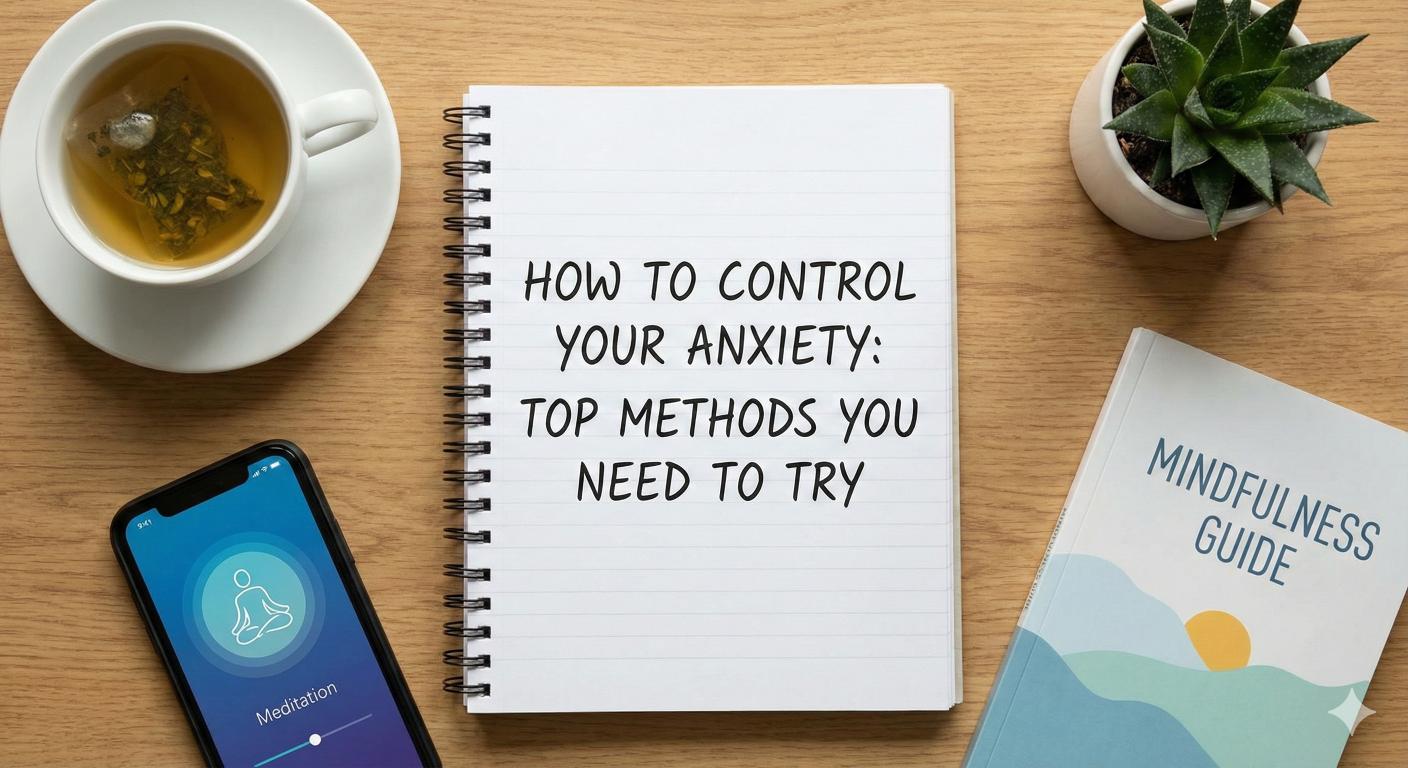The Elderlys Mood Disorders and Effective Treatments
Explore mood disorders in the elderly: unique challenges and treatments for improved mental health outcomes.

Understanding Mood Disorders in the Elderly
Prevalence and Onset Factors
Mood disorders among the elderly present unique challenges that are distinct from those faced by younger adults. While depression is less common in older adults than in younger populations, more than half of the cases represent a first onset in later life. According to research, the prevalence of major depressive disorder among community-sampled adults aged 65 and older ranges from 1% to 5%. It is noteworthy that rates of depression tend to be higher in older women compared to older men.
Several factors contribute to the onset of mood disorders in elderly individuals. Risk factors often involve complex interactions among genetic predispositions, cognitive resilience, age-related neurobiological changes, and stressful life events. Insomnia is commonly overlooked as a risk factor for late-life depression, highlighting the importance of sleep in emotional well-being.
Age GroupPrevalence of Major Depressive DisorderAdults aged 65+1% - 5%Older WomenHigher than older men

Relationship to Suicide
Suicide rates among the elderly have seen declines; however, they still remain higher than those found in younger age groups, with depression being closely associated with these rates. It is crucial to recognize the warning signs of suicidal ideation, especially given the potential for mood disorders to intensify feelings of hopelessness and despair.
Factors such as isolation, lack of social support, and declining health can further increase the risk of suicide among older adults. Addressing these underlying issues is essential to mitigating risks associated with mood disorders and promoting mental health.
Older individuals should be encouraged to seek help if they are experiencing symptoms of depression or thoughts of suicide. Effective interventions, including lifestyle changes to manage mood disorders and alternative therapies, can greatly improve their quality of life while reducing suicide risk. Understanding the connection between mood disorders and suicide is vital in ensuring comprehensive care for elderly patients. For more information on recognizing warning signs, refer to our article on mood disorders and suicide risk: recognizing warning signs.
Treatments for Late-Life Depression
Addressing late-life depression requires a multifaceted approach to accommodate the unique challenges experienced by older adults. Both behavioral and cognitive therapies, as well as pharmacological interventions, are crucial for effective treatment.
Behavioral and Cognitive Therapies
Behavioral and cognitive therapies are particularly beneficial for managing mood disorders in the elderly. Some notable approaches include:
Despite the effectiveness of these treatments, they are not frequently utilized among older adults [1].
Therapy TypeDescriptionCognitive Behavioral Therapy (CBT)Identifies and changes negative thought patterns.Cognitive BibliotherapyUses self-help literature for understanding and managing mood.Problem-Solving TherapyTeaches practical strategies for overcoming difficulties.Brief Psychodynamic TherapyIncreases awareness of unconscious influences on mood.Life Review TherapyEncourages reflection on life experiences to find meaning.
Pharmacological Interventions
Pharmacological treatments also play a significant role in managing late-life depression and must be tailored to the individual’s health status. Some common pharmacological interventions include:
Other non-pharmacological options include cognitive behavioral therapy, electroconvulsive therapy (ECT), repetitive transcranial magnetic stimulation, physical exercise, and psychotherapy.
Medication TypeExamplesPurposeAntidepressantsSSRIs, SNRIsTo alleviate depressive symptoms.Mood StabilizersLithiumTo manage mood fluctuations.AntipsychoticsVariousTo address severe symptoms in combination with other treatments.
Understanding these treatment modalities helps to recognize the available options for managing mood disorders in the elderly: unique challenges and treatments against the backdrop of aging. For more strategies on coping with emotional instability, check out our resources on coping with emotional instability and managing chronic sadness.
Risk Factors and Rates
Understanding the risk factors and prevalence rates of mood disorders in older adults is essential to address the unique challenges they face. This section explores gender disparities as well as the impact of various subsets and settings.
Gender Disparities
Research indicates that mood disorders manifest differently across genders. Women, particularly in older age groups, are at a higher risk for experiencing mood disorders compared to men. Factors such as hormonal changes, social roles, and life stressors contribute significantly to this disparity.
In terms of specific rates, major depression occurs at varying levels among older adults:
Subsets and Settings
Certain subsets of older adults face an increased risk of mood disorders due to their specific circumstances. For instance, older adults living in long-term care facilities have notably higher rates of depression. This can be attributed to factors such as social isolation, loss of independence, and limited social support.
The following table summarizes the prevalence of major depression in different settings:
SettingPrevalence Rate (%)General older adult population10 - 38Medical outpatients5 - 10Medical inpatients10 - 12Long-term care facilities14 - 42
Additionally, studies highlight the importance of environmental factors. Increasing urban green space has been found to enhance pleasure and reduce the risk of mental health issues, positively impacting elderly communities. Despite these challenges, many older adults with mood disorders do not seek mental health help, leading to further complications [4].
Role of Social Support
Social support plays a crucial role in the mental well-being of elderly individuals experiencing mood disorders. When exploring the connections between social networks and mental health, it becomes clear that support systems foster psychological resilience and impact overall well-being.
Psychological Resilience
Psychological resilience refers to the ability of an individual to adapt and maintain mental health in the face of adversity. For the elderly, resilience can be significantly influenced by social support networks. Studies indicate that psychological resilience and social support show a strong relationship in mitigating mental health issues among older adults [3].
This resilience helps older adults navigate the unique challenges of mood disorders and enhances their capacity to cope with stressors. The presence of family, friends, and community members provides emotional backing, which is essential for maintaining well-being.
Factors Influencing Psychological ResilienceDescriptionSocial SupportEmotional, instrumental, and informational support available from social networksCoping StrategiesAdaptive methods used to deal with stress and adversityHealth StatusOverall physical health, impacting mood and resilience
Impact of Social Support
The impact of social support on subjective well-being among elderly individuals cannot be overstated. A significant correlation exists between levels of social support and positive well-being, revealing that emotional and practical support are key components in managing mood disorders [3].
Both perceived and received social support matter, though findings suggest that enhancing perceived social support can be more beneficial than merely increasing the amount of support received. This emphasis on perception highlights the importance of how individuals feel supported, rather than just the availability of help [5].
Types of Social SupportImpact on ElderlyEmotional SupportProvides comfort and reduces feelings of isolationInstrumental SupportAssists with daily tasks, reducing stressInformational SupportOffers guidance and advice, fostering coping skills
Social support also contributes to the psychological resilience of caregivers, who play a critical role in the well-being of older adults. Enhancing perceived social support for caregivers may alleviate subjective burdens and improve both parties' mental health [5].
In conclusion, the integration of social support into interventions for older adults dealing with mood disorders presents a pathway to improved mental health outcomes. Addressing the unique challenges faced by this population is essential for sustaining their quality of life. For more insights into effective coping strategies, consider reading about coping with emotional instability and lifestyle changes to manage mood disorders.
Mental Health Help-Seeking in Older Adults
Understanding the mental health help-seeking behaviors among older adults is crucial to addressing mood disorders effectively. This section discusses the barriers and facilitators that influence whether older adults seek help, as well as the disparities that exist among racial groups regarding mental health services.
Barriers and Facilitators
Older adults face several challenges when it comes to seeking mental health treatment. Research indicates that stigma surrounding mental health issues is a significant barrier. Many older individuals report embarrassment and concerns about how others perceive them as common reasons for not seeking help [4]. Negative beliefs about the effectiveness of professional mental health services further discourage many from pursuing help.
Financial constraints also play a role, as many older adults may have limited income or can’t afford treatment costs. Conversely, higher socioeconomic status has been identified as a facilitator for seeking mental health care. Older adults with better financial resources are more likely to access the help they need [4].
Common Barriers to Help-Seeking
BarrierDescriptionStigmaFear of judgment and embarrassmentNegative beliefsDoubts about the effectiveness of servicesFinancial constraintsInability to afford treatment
Disparities among Racial Groups
Significant disparities exist in mental health help-seeking behaviors among various racial and ethnic groups. Notably, Asian and Pacific Islanders, Black individuals, and Hispanics are more likely to express concerns about seeking treatment compared to their non-Hispanic White counterparts. These groups often cite worries about the stigma associated with treatment and apprehensions about communicating with mental health professionals [4].
Moreover, only a small percentage of veterans, specifically 16%, reported utilizing mental health treatment in their lifetime, revealing a broader trend of low service utilization among distressed populations. Current suicidal ideation appears to be linked with increased mental health service use, indicating that urgency can sometimes prompt action.
Disparities in access and utilization of mental health services highlight the need for targeted interventions aimed at reducing barriers and promoting equity in care. Addressing these disparities is paramount to developing effective treatments for mood disorders in older adults. For strategies on coping with emotional instability, consider exploring coping with emotional instability or lifestyle changes to manage mood disorders.
Cognitive Symptoms in Geriatric Mood Disorders
Cognitive symptoms play a significant role in mood disorders among the elderly. These symptoms not only manifest in unique ways but also have the potential to substantially influence daily functioning and quality of life.
Clinical Presentations
In elderly patients, mood disorders like depression often exhibit distinct clinical presentations compared to younger individuals. Common features include increased sleep disturbances, fatigue, psychomotor retardation, and feelings of hopelessness. Additionally, neurological comorbidities such as Parkinson's disease and stroke can complicate the clinical picture, leading to variations in how symptoms are expressed [2].
Cognitive deficits are particularly prevalent in geriatric mood disorders. Research shows that cognitive symptoms, especially those related to executive functions and memory performance, are present in both geriatric depression and bipolar disorder (BD). This highlights the importance of understanding cognitive impacts when assessing and treating older adults with mood disorders.
Symptom TypePossible Presentation in Elderly PatientsSleep DisturbanceInsomnia, frequent wakingFatiguePersistent tiredness, low energyPsychomotor RetardationSlowed movements and reactionsHopelessnessPessimistic outlook on life
Impact on Functionality
Cognitive symptoms associated with late-life mood disorders can detrimentally affect functionality and psychosocial performance. Older adults with bipolar disorder often experience cognitive impairments that persist even when they are not experiencing mood episodes (euthymia). These impairments can manifest in various aspects of daily life, including occupational activities. Reports indicate that approximately 30% to 60% of older patients with bipolar disorder experience significant limitations in their occupational performance due to cognitive challenges.
Cognitive difficulties primarily related to executive dysfunction may impair critical functions such as abstract thinking, decision-making, verbal fluency, and attention. To ensure better management of these cognitive symptoms, it is crucial for caregivers and healthcare providers to be aware of their existence and integrate strategies that address both mood regulation and cognitive support. For strategies to manage mood disorders effectively, consider exploring lifestyle changes to manage mood disorders and the role of sleep in mood regulation.
References
[2]:
[3]:
[4]:
[5]:
More Resources
A team ready to start your journey.
Get in touch — today.
We are a safe space – a haven for exceptional individuals to receive discreet, personalized, in-person treatment and care.
.avif)










